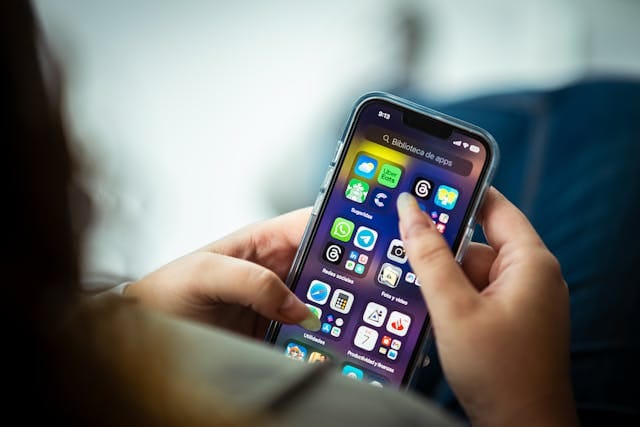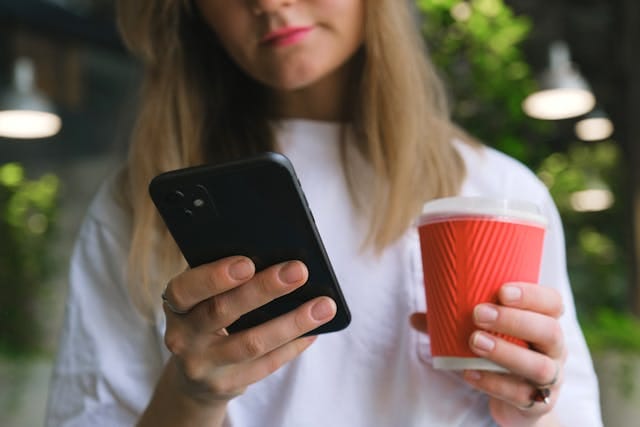Face ID on iPhone is an advanced feature that adds convenience and security by unlocking your device, authorizing purchases, and protecting your data with just a look. However, there may come a time when you need to reset it. Whether due to technical issues, appearance changes, or simply wanting a fresh start, this guide will walk you through how to reset Face ID on iPhone. We’ll cover all the details for models from iPhone X to iPhone 14, ensuring you get back to a seamless experience with Face ID.
This guide will take you step-by-step through how to reset Face ID on iPhone, exploring specific model tips, troubleshooting techniques, and practical advice.
Why Resetting Face ID on iPhone Might Be Necessary
Before diving into the specific steps of how to reset Face ID on iPhone, let’s review some common reasons why a reset may be helpful.
- Inconsistent Recognition: Over time, Face ID might fail to recognize you consistently, especially if your appearance has changed or the camera system needs recalibration.
- Software or Hardware Glitches: Occasionally, software updates or hardware issues can impact Face ID performance, making a reset essential.
- Physical Damage to the Camera System: Damage to your iPhone, especially near the TrueDepth camera, can reduce Face ID’s accuracy.
- Security Concerns: If you’re worried that Face ID data may be compromised or prefer to refresh the system, resetting it can be an effective solution.
Knowing how to reset Face ID on iPhone equips you to handle such issues, ensuring your iPhone remains secure and responsive.
How to Reset Face ID on iPhone: Step-by-Step Guide
Step 1: Access Settings
The process for how to reset Face ID on iPhone starts by opening the Settings app, which is where all Face ID configurations are managed.
Step 2: Select Face ID & Passcode
Within Settings, scroll down to find Face ID & Passcode. Tapping this will prompt you to enter your passcode to access Face ID settings.
Step 3: Tap on Reset Face ID
After entering your passcode, locate and tap the Reset Face ID option. This action will delete your current Face ID data, preparing your device for a fresh setup.
Step 4: Confirm Reset
When you choose to reset Face ID, your iPhone may ask you to confirm. Tap to confirm, and the system will clear existing Face ID data.
Step 5: Set Up Face ID Again
Once Face ID has been reset, return to Face ID & Passcode and tap Set Up Face ID to start the setup process.
Step 6: Position Your Face Within the Frame
When setting up, your iPhone will display a circular frame on the screen. Position your face within this frame and gently move your head in a circle to complete the scan.
Step 7: Complete a Second Scan
For optimal recognition, Face ID requires two scans. Follow the on-screen prompts to complete the second scan, ensuring your face is fully mapped.
Step 8: Test the New Face ID Setup
After setting up, lock your iPhone and test unlocking it with Face ID to make sure it works as expected. Your reset is now complete!
Model-Specific Tips for Resetting Face ID on iPhone
How to Reset Face ID on iPhone X
The iPhone X was the first model to feature Face ID. If you’re learning how to reset Face ID on iPhone X, consider these additional tips:
- Clean the Camera Lens: Dust or smudges on the TrueDepth camera can interfere with Face ID. Clean it with a soft, lint-free cloth.
- Update iOS Software: Running the latest iOS software can resolve compatibility issues that sometimes affect Face ID.
How to Reset Face ID on iPhone 11
For those using the iPhone 11, here are some model-specific pointers:
- Improve Low-Light Recognition: To improve Face ID’s performance in low light, set up your face scan under various lighting conditions.
- Enable Attention Awareness: This ensures Face ID only unlocks when you look directly at your phone.
How to Reset Face ID on iPhone 12 and iPhone 13
These models feature an improved Face ID system. When learning how to reset Face ID on iPhone 12 or 13, consider the following:
- Alternative Appearances: If your look changes often (e.g., wearing different glasses), set up an alternative appearance for better accuracy.
- Disable Attention Awareness Temporarily: Temporarily disabling this setting can help in areas with inconsistent lighting.
How to Reset Face ID on iPhone 14
For the latest iPhone 14, resetting Face ID may involve the same steps, but with better hardware integration, Face ID performs better in diverse lighting and environmental conditions:
- Check for Obstructions: Be sure the TrueDepth camera area is clear of any dirt or debris that could interfere with Face ID accuracy.
- Run Tests: After resetting, test Face ID in various conditions (indoors, outdoors, with and without glasses) to ensure the highest accuracy.
Troubleshooting Common Face ID Issues
If you’re experiencing issues with Face ID but want to avoid resetting it, try these troubleshooting tips first.
- Clean the Camera Lens: Dust or fingerprints can reduce Face ID’s effectiveness. Cleaning the lens can often resolve minor issues.
- Restart Your iPhone: A simple restart may fix temporary glitches affecting Face ID performance.
- Update iOS Software: Apple frequently updates iOS to enhance Face ID performance. Ensure your device is up to date.
- Recalibrate Face ID by Adjusting Position: If Face ID struggles in certain lighting, consider resetting and scanning your face in similar lighting conditions.
Enhancing Face ID Security and Accuracy
After resetting, there are additional steps to maximize Face ID’s accuracy and security.
- Enable Attention Awareness: Turning on this option makes Face ID unlock only when you’re looking directly at your screen, adding an extra layer of security.
- Set Up Alternative Appearances: This feature is helpful if your appearance changes frequently.
- Ensure TrueDepth Camera is Clear: Obstructions like screen protectors can interfere with Face ID, so make sure the camera has a clear view.
Frequently Asked Questions
How Do I Reset Face ID on My iPhone?
To reset Face ID, navigate to Settings > Face ID & Passcode > Reset Face ID. This will remove all Face ID data, allowing you to set it up fresh and resolve any recognition issues. For specific model instructions, refer to the detailed guide above.
Why Would I Need to Reset Face ID on My iPhone?
There are a few common reasons to reset Face ID: inconsistent recognition, technical issues, changes in appearance, or security concerns. Resetting Face ID can improve accuracy and ensure your device remains secure.
How Often Should I Reset Face ID on My iPhone?
Typically, you don’t need to reset Face ID regularly. Only reset it if you notice frequent recognition issues or after a major appearance change, like significant weight loss, a new hairstyle, or facial hair.
Can I Set Up Face ID for More Than One Person?
Face ID is designed primarily for a single user, but it allows you to set up an Alternative Appearance. This option can be used if you frequently change your appearance or if another person needs occasional access.
What Do I Do If Face ID Isn’t Recognizing Me After Resetting?
If Face ID fails to recognize you after resetting, ensure you completed both scans during setup. Try setting up Face ID in a well-lit area and cleaning the TrueDepth camera. If the problem persists, restart your iPhone and go through the setup process again.
Will Face ID Still Work After an iOS Update?
Face ID generally works smoothly with new iOS updates, but issues can occasionally arise. If you experience problems after an update, a quick reset of Face ID can help recalibrate the system.
Does Resetting Face ID Delete My Other Settings?
Resetting Face ID only removes Face ID data and configurations. Your passcode, apps, and other data remain unchanged. After resetting, you’ll simply need to redo the Face ID setup.
Can Face ID Be Used for Other Apps Beyond Unlocking the iPhone?
Yes, Face ID can be used for app authentication, secure payments with Apple Pay, and logging in to websites in Safari. These permissions can be configured within each app’s settings.
How Do I Reset Face ID on My iPhone Without Losing Other Data?
To reset Face ID without affecting other data, go to Settings > Face ID & Passcode and tap Reset Face ID. This action only deletes Face ID data and doesn’t interfere with other phone settings.
How Can I Improve Face ID Accuracy Without Resetting?
Try cleaning the TrueDepth camera and ensuring your face is clearly visible. Go to Settings > Face ID & Passcode and add an Alternative Appearance if your look varies frequently. Adjusting the Attention Awareness settings may also improve accuracy in low-light conditions.
Will Face ID Work if I’m Wearing a Mask?
Recent iOS updates have improved Face ID’s compatibility with masks, especially on newer models like iPhone 12 and later. However, if Face ID is not working as expected, you can reset Face ID and try reconfiguring it to work more effectively with a mask.
How Do I Reset Face ID on My iPhone After Physical Damage?
If your iPhone has sustained physical damage, especially near the TrueDepth camera, resetting Face ID may help. Follow the steps in Settings > Face ID & Passcode > Reset Face ID and then reconfigure Face ID to check if performance improves. Note that severe damage may require a repair.
Can I Temporarily Disable Face ID Without Resetting?
Yes, you can disable Face ID without resetting by going to Settings > Face ID & Passcode and toggling off the specific features (e.g., iPhone Unlock, iTunes & App Store). This temporarily disables Face ID, but you can turn it back on anytime without needing to reset it.
How Do I Reset Face ID on My iPhone if I Forgot My Passcode?
If you forgot your passcode, you’ll need to reset the device completely. This will erase all data, including Face ID. After restoring your iPhone, you can set up Face ID again. Make sure to back up your data before proceeding with a factory reset.
Can Face ID Be Used in Different Lighting Conditions?
Yes, Face ID works in various lighting environments, from bright sunlight to low light, as it uses infrared technology to map your face. If Face ID has trouble recognizing you in specific lighting, a reset may recalibrate the system for better performance.
Is It Safe to Reset Face ID if I Share My Phone with Family Members?
Resetting Face ID will erase any previously set facial data, including an Alternative Appearance. If you regularly share your iPhone, consider using the passcode for shared access instead of relying solely on Face ID, as it is designed primarily for individual use.
How Do I Reset Face ID on My iPhone and Still Use It With Glasses?
Face ID generally works well with glasses, but if you’re experiencing issues, reset Face ID and set up the scans wearing your most commonly used eyewear. You can also enable Alternative Appearance if you have multiple pairs that vary significantly in style.
To reset Face ID, go to Settings > Face ID & Passcode > Reset Face ID. This will delete all Face ID data and let you set it up again.
Conclusion: Mastering How to Reset Face ID on iPhone
Learning how to reset Face ID on iPhone is a useful skill for troubleshooting and optimizing your device’s security. By following the steps and recommendations outlined here, you can effectively reset Face ID on any iPhone model and improve its performance. Resetting Face ID is a simple process that can make a significant difference in maintaining your iPhone’s security and usability.
Whether you’re using an iPhone X, iPhone 11, iPhone 12, iPhone 13, or iPhone 14, the instructions here will guide you through the entire process with ease. Resetting Face ID is a practical solution to resolving common recognition issues and enhancing your iPhone’s security.






